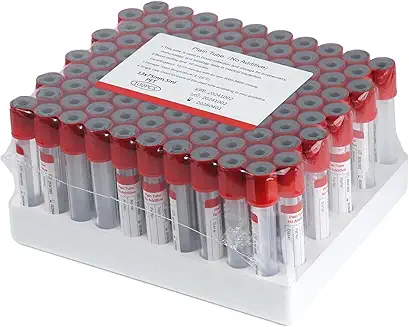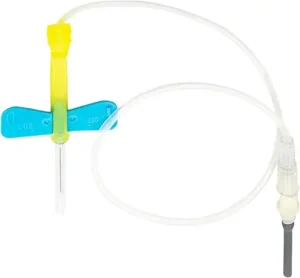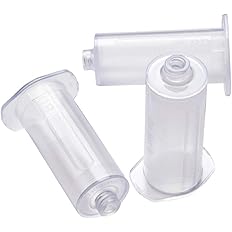Vacutainer blood collection refers to the process of using BD Vacutainer tubes for the collection of blood samples in a controlled and sterile environment. This method is commonly used in healthcare settings for blood draws, where blood is collected for laboratory testing, diagnostic purposes, or for blood donations.
Key Components of Vacutainer Blood Collection:
BD Vacutainer Tubes:
These are vacuum-sealed tubes that help collect a precise amount of blood by creating a vacuum inside the tube. When the needle is inserted into the vein, the vacuum draws blood into the tube, eliminating the need for manual aspiration.
The tubes come in various colors, each corresponding to specific additives (such as anticoagulants, preservatives, or clot activators) required for different tests.
Needle and Holder:
A needle is used to puncture the vein and is connected to the Vacutainer holder, which holds the Vacutainer tube securely. The holder is a plastic device that attaches to the needle, allowing the vacuum to draw blood into the tube.
Safety Features:
Many Vacutainer systems come with safety needles or safety holders, which are designed to prevent accidental needlestick injuries. These safety features are especially important for healthcare providers handling blood samples.
The Vacutainer Blood Collection Process:
Preparation:
Patient Identification: Ensure the patient’s identity is confirmed, and that the correct tubes are chosen based on the required tests.
Site Selection: The vein is located, typically in the antecubital fossa (inner elbow area), though other veins can be used as well.
Tourniquet Application: A tourniquet is applied above the venipuncture site to make the veins more prominent and easier to access.
Blood Draw:
The healthcare provider prepares the site by cleaning the skin with an antiseptic wipe to prevent contamination.
The needle is inserted into the vein, and the Vacutainer tube is attached to the holder. Once the tube is in place, the vacuum within the tube causes blood to be drawn into it.
If more than one tube is needed, the provider may switch tubes, depending on the test requirements. The order of draw is important to prevent cross-contamination of additives.
After Collection:
Once the required amount of blood is collected, the needle is removed, and pressure is applied to the puncture site to prevent bleeding.
The blood-filled Vacutainer tubes are labeled with patient information and transported to the laboratory for testing.
Types of BD Vacutainer Tubes:
The BD Vacutainer tubes come with various color-coded tops that correspond to specific additives, and each color serves a different purpose for different laboratory tests. Some common types include:
Red (No Additive): Used for serum collection. Typically used for tests requiring blood without any additives, such as blood chemistry panels.
Lavender/Purple (EDTA): Contains EDTA, an anticoagulant, for hematology tests such as complete blood counts (CBC) and blood smears.
Blue (Sodium Citrate): Contains sodium citrate, which is an anticoagulant used for coagulation studies, like PT (Prothrombin Time) and PTT (Partial Thromboplastin Time).
Green (Heparin): Contains heparin, another anticoagulant, used for plasma collection in tests such as chemistry panels or ammonia levels.
Yellow (ACD or SPS): Used for blood cultures or specialized tests. ACD (Acid Citrate Dextrose) is used for preserving blood for transfusions, while SPS (Sodium Polyanethol Sulfonate) is used in blood culture collections.
Advantages of Vacutainer Blood Collection:
Convenience and Efficiency: The vacuum system allows for quick and efficient collection of blood, reducing the time required for the procedure.
Precision: The vacuum ensures the collection of an accurate volume of blood, which is essential for various laboratory tests.
Safety: Many Vacutainer systems include safety features such as retractable needles or shields to reduce the risk of accidental needlesticks and exposure to bloodborne pathogens.
Consistency: The vacuum system reduces the risk of blood contamination and ensures consistency in the collection process, especially when multiple tubes are needed.
Variety: The availability of different types of Vacutainer tubes with specific additives ensures that a wide range of tests can be performed from a single blood draw.
The Order of Draw:
When multiple tubes are required, it’s important to follow a specific order to avoid cross-contamination of additives between tubes. The general order of draw is:
Blood cultures (Yellow)
Coagulation tubes (Blue)
Serum tubes (Red or Gold)
Heparin tubes (Green)
EDTA tubes (Lavender)
Glycolytic inhibitor tubes (Gray)




Reviews
There are no reviews yet.